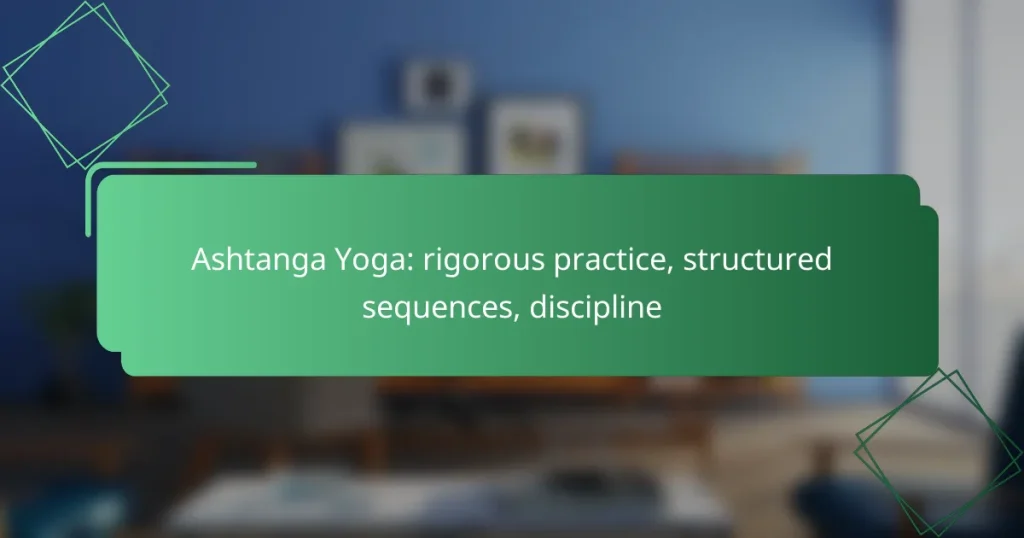
Ashtanga Yoga: rigorous practice, structured sequences, discipline
Ashtanga Yoga is a dynamic and disciplined practice characterized by its rigorous sequences that enhance…
Yoga encompasses a variety of styles, each designed to cater to different needs and preferences. From the calming practices of Hatha to the dynamic flow of Vinyasa, understanding these diverse approaches can help you find the perfect fit for your personal fitness journey. Whether you're seeking physical strength, mental clarity, or emotional balance, exploring different yoga styles can significantly enhance your overall well-being.
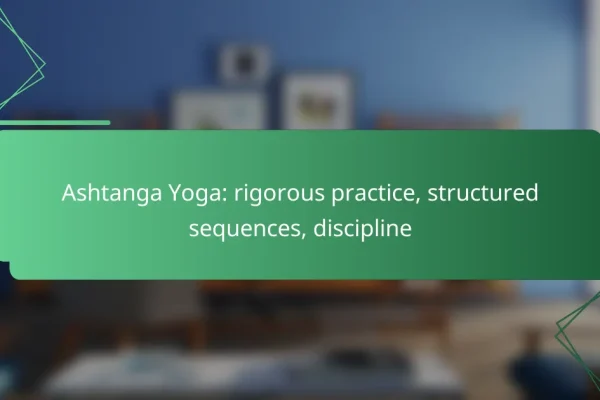
Ashtanga Yoga is a dynamic and disciplined practice characterized by its rigorous sequences that enhance physical fitness and mental resilience. With a structured approach consisting of three main series, practitioners cultivate strength, flexibility, and consistency, leading to profound improvements in overall well-being. How can Ashtanga Yoga improve physical fitness? Ashtanga Yoga enhances physical fitness through…

Kundalini Yoga is a transformative practice that seeks to awaken the dormant energy within individuals, fostering a profound connection to their inner selves and the universe. By integrating physical postures, breath control, chanting, and meditation, it enhances spiritual awareness and promotes overall well-being, guiding practitioners on a journey of self-discovery and enlightenment. How does Kundalini…
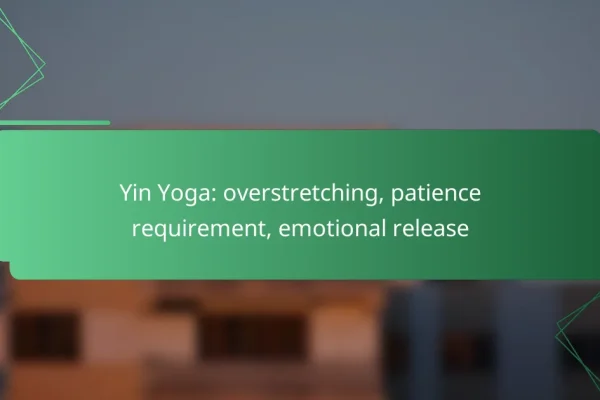
Yin Yoga is a gentle practice that emphasizes slow, mindful movements and deep relaxation, helping to prevent overstretching by encouraging practitioners to listen to their bodies. This form of yoga requires patience, as poses are held for extended periods, fostering deep stretching and emotional release. Through its introspective nature, Yin Yoga allows individuals to connect…
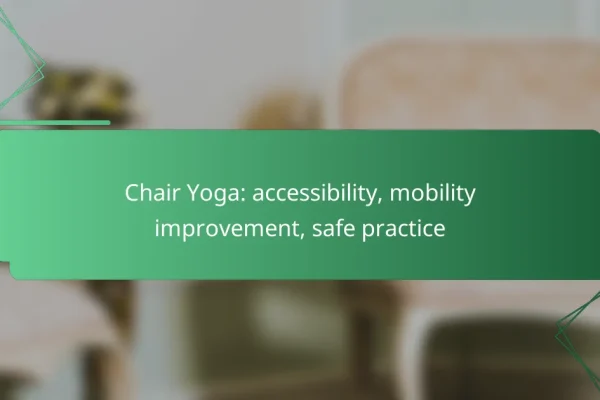
Chair yoga offers a safe and accessible way for seniors and individuals with limited mobility to engage in physical activity. By focusing on gentle movements and stretches, it enhances flexibility, balance, and strength, ultimately making daily tasks easier to perform. Practicing chair yoga with proper techniques ensures a safe experience while maximizing its numerous benefits….
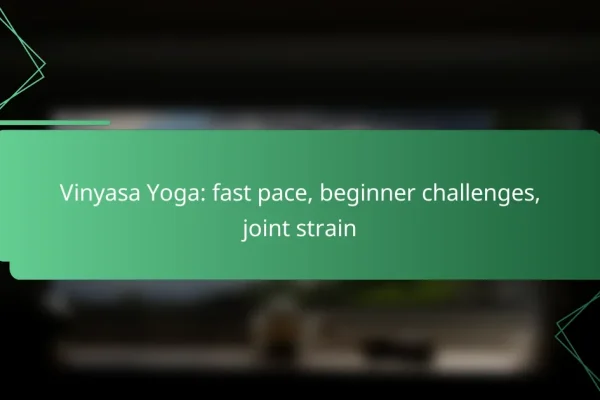
Vinyasa Yoga offers a dynamic practice that can be both invigorating and challenging, especially for beginners. The fast pace of classes may present difficulties, such as maintaining balance and flexibility, while also navigating transitions between poses. To minimize the risk of joint strain, newcomers should focus on proper alignment, use props for support, and gradually…

Power Yoga is a dynamic and invigorating practice designed to help you achieve your fitness goals, including enhanced strength, flexibility, and overall health. By focusing on engaging multiple muscle groups through continuous movement and breath control, it not only builds physical strength but also boosts energy levels, making each session a high-energy workout experience. How…
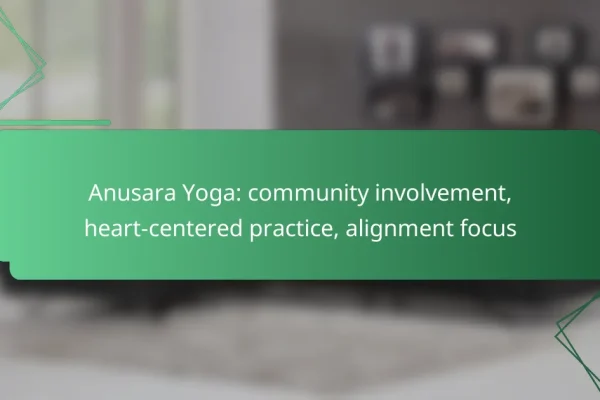
Anusara Yoga is a heart-centered practice that emphasizes community involvement, fostering connections and collaboration among practitioners. By focusing on alignment and personal values, it encourages individuals to cultivate compassion and mindfulness, creating a supportive environment for personal growth. This holistic approach not only enhances physical well-being but also deepens the connection to one’s inner self…

Sivananda Yoga is a holistic practice that combines physical postures, breathing techniques, and meditation to foster overall well-being. By focusing on the balance of body, mind, and spirit, it enhances relaxation and promotes mental clarity, making it an ideal choice for those seeking to alleviate stress and improve health in today’s fast-paced world. How does…
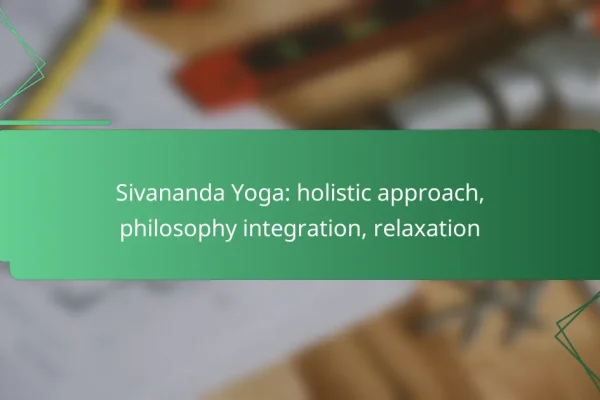
Sivananda Yoga offers a holistic approach to well-being by integrating physical postures, breathing techniques, and meditation practices. This comprehensive system promotes relaxation, reduces stress, and enhances mental clarity, fostering a deep sense of calm. By emphasizing ethical living and balance, Sivananda Yoga nurtures not only the body but also the mind and spirit, encouraging overall…
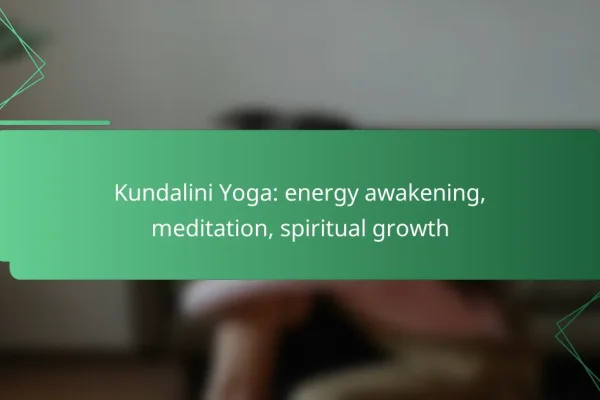
Kundalini Yoga is a transformative practice that awakens the dormant energy at the base of the spine, promoting spiritual growth and heightened awareness. By integrating breathwork, chakra activation, and meditation, it facilitates a powerful flow of energy throughout the body, leading to enhanced mental clarity and emotional stability. Engaging in this practice can result in…
The most popular yoga styles in the United States include Hatha, Vinyasa, Bikram, Ashtanga, and Yin Yoga. Each style offers unique benefits and practices, catering to different preferences and fitness levels.
Hatha Yoga is often considered a foundational style that emphasizes basic postures and breathing techniques. It is generally slower-paced, making it ideal for beginners who want to learn the fundamentals of yoga.
This style typically includes a variety of poses held for longer durations, allowing practitioners to focus on alignment and mindfulness. Classes may vary in intensity, so it's advisable to check the specific class level before attending.
Vinyasa Yoga is characterized by its fluid movement and breath synchronization, creating a dynamic flow between poses. This style often features a sequence of postures that transition smoothly, making it suitable for those who enjoy a more energetic practice.
Classes can vary significantly in intensity and duration, often incorporating music to enhance the experience. Practitioners should be prepared for a workout that can include both strength-building and flexibility-enhancing elements.
Bikram Yoga consists of a specific sequence of 26 postures practiced in a heated room, typically around 105°F (40°C). This style aims to promote detoxification and flexibility through the heat, which allows muscles to stretch more effectively.
Due to the high temperatures, it is crucial to stay hydrated and listen to your body. Beginners should approach this style with caution, as the heat can be intense and may not be suitable for everyone.
Ashtanga Yoga is a rigorous style that follows a set sequence of poses performed in a specific order. It emphasizes strength, flexibility, and endurance, making it a physically demanding practice.
This style is ideal for those who thrive on structure and consistency. Practitioners should be prepared for a challenging workout and may benefit from prior experience in yoga before diving into Ashtanga classes.
Yin Yoga focuses on passive stretching and relaxation, with poses held for extended periods, usually between three to five minutes. This style targets deep connective tissues and promotes flexibility and joint health.
Yin Yoga is suitable for all levels and is particularly beneficial for those looking to unwind and reduce stress. Practitioners should approach this style with patience, as the slower pace encourages introspection and mindfulness.
Choosing the right yoga style for beginners involves understanding personal fitness goals, assessing physical limitations, and evaluating class availability. Each style offers unique benefits, so it’s essential to align your choice with what you hope to achieve through your practice.
Your fitness goals play a crucial role in selecting a yoga style. If you aim to increase flexibility, styles like Hatha or Yin may be suitable. For those looking to build strength, consider Vinyasa or Ashtanga, which incorporate more dynamic movements.
Additionally, if relaxation and stress relief are your priorities, restorative yoga or gentle yoga classes can provide the calming experience you seek. Reflect on what you want to gain from your practice to guide your decision.
Understanding your physical limitations is vital when choosing a yoga style. If you have injuries or chronic pain, gentler styles such as Yin or Restorative yoga can help you practice safely. Always consult with a healthcare professional if you have concerns about your physical condition.
Moreover, consider your current fitness level. Beginners may benefit from classes that focus on foundational postures and alignment, allowing for gradual progression without strain.
Class availability can significantly influence your choice of yoga style. Research local studios or online platforms to see which styles are offered and their schedules. Some areas may have a rich variety of classes, while others might be limited to a few popular styles.
Additionally, consider the instructor's experience and teaching style. A knowledgeable instructor can enhance your learning experience, especially as a beginner. Look for classes that fit your schedule and offer the guidance you need to develop your practice effectively.
Practicing yoga offers numerous benefits, including physical, mental, and emotional improvements. Regular yoga sessions can enhance overall well-being, making it a valuable addition to a healthy lifestyle.
One of the most recognized benefits of yoga is improved flexibility. Many poses stretch various muscle groups, helping to increase the range of motion in joints over time. This can be particularly beneficial for individuals who may experience stiffness due to sedentary lifestyles or aging.
To enhance flexibility, consider incorporating a variety of yoga styles that emphasize stretching, such as Hatha or Yin yoga. Aim for at least two to three sessions per week to notice significant changes.
Yoga promotes enhanced mental clarity by encouraging mindfulness and focus. The practice often includes breath control and meditation techniques that help clear the mind and improve concentration. This can lead to better decision-making and increased productivity.
For optimal mental clarity, try dedicating a few minutes at the end of each session to meditation or deep breathing exercises. Consistency is key, so aim for daily practice, even if it's just for a short period.
Yoga is effective for stress reduction, as it activates the body's relaxation response. Through controlled breathing and mindful movements, yoga helps lower cortisol levels, which are often elevated during stressful times. This can lead to a greater sense of calm and well-being.
To maximize stress relief, consider incorporating restorative yoga styles, such as Restorative or Nidra yoga, into your routine. Engaging in yoga for at least 20-30 minutes several times a week can significantly help manage stress levels.
Different yoga styles may require specific equipment to enhance your practice. Essential items include a yoga mat, blocks, straps, and comfortable clothing to support various poses and movements.
A good yoga mat is crucial for providing grip and cushioning during practice. Look for mats that are at least 4-6 mm thick to ensure comfort on hard surfaces. Materials like natural rubber or PVC are popular for their durability and traction.
When selecting a mat, consider its weight and portability if you plan to travel. A lightweight mat can be easier to carry, while a thicker mat may offer more support for sensitive joints.
Yoga blocks and straps are helpful tools that assist in achieving proper alignment and extending reach in various poses. Blocks can be used to modify poses, making them accessible for beginners or those with limited flexibility.
Straps are useful for deepening stretches and maintaining form. Choose straps that are around 6-8 feet long and made from durable materials like cotton or nylon for optimal support.
Wearing comfortable clothing is essential for unrestricted movement during yoga practice. Opt for breathable, moisture-wicking fabrics that allow for flexibility and ease of movement.
Consider clothing that fits well but is not too tight, as this can hinder your range of motion. Many yogis prefer leggings or shorts paired with a fitted top to ensure comfort in various poses.
Prerequisites for advanced yoga styles typically include prior experience and a certain level of physical fitness. These factors help ensure that practitioners can safely and effectively engage with more complex postures and techniques.
Having prior experience in yoga is crucial for tackling advanced styles. Most practitioners should have a solid foundation in basic poses and breathing techniques, often requiring at least a few months to a couple of years of regular practice. This experience allows individuals to develop body awareness and alignment, which are essential for more challenging practices.
It's advisable to explore different styles before advancing, as each offers unique benefits and challenges. For example, someone who has practiced Hatha yoga may find it easier to transition to Ashtanga or Vinyasa, which involve more dynamic movements.
A good level of physical fitness is important for engaging in advanced yoga styles. Practitioners should be comfortable with their strength, flexibility, and endurance, as these attributes are tested in more demanding poses. Regular cardiovascular and strength training can complement yoga practice and enhance overall fitness.
Before attempting advanced styles, assess your fitness through a self-check or consultation with a yoga instructor. Common indicators include the ability to hold basic poses for extended periods and perform transitions smoothly. Avoid pushing your limits too quickly to prevent injury.
Yoga styles vary significantly in their approach to meditation, with some emphasizing mindfulness and others focusing on movement or breath control. Each style offers unique techniques that cater to different preferences and goals, influencing how practitioners engage with their meditation practice.
Hatha yoga incorporates mindfulness through a focus on physical postures and breath awareness. Practitioners are encouraged to connect with their bodies and cultivate present-moment awareness, making it an excellent choice for those new to meditation.
In Hatha, mindfulness is achieved by holding poses and paying attention to sensations, thoughts, and emotions that arise. This practice can enhance self-awareness and promote relaxation, making it easier to transition into deeper meditative states.
To effectively practice mindfulness in Hatha, focus on your breath while holding each pose. Avoid rushing through transitions and instead take time to notice how your body feels, which can deepen your meditation experience and improve overall well-being.